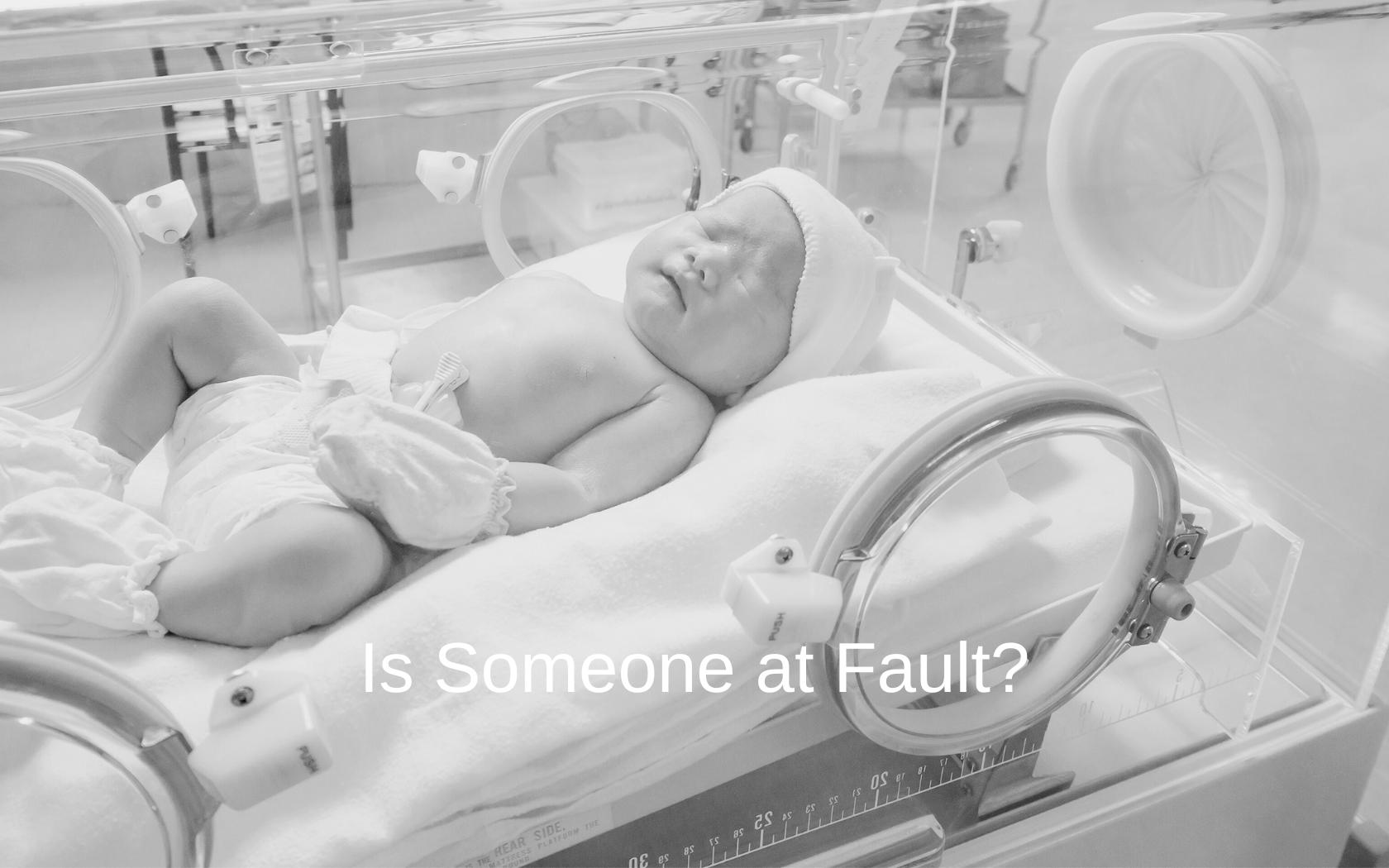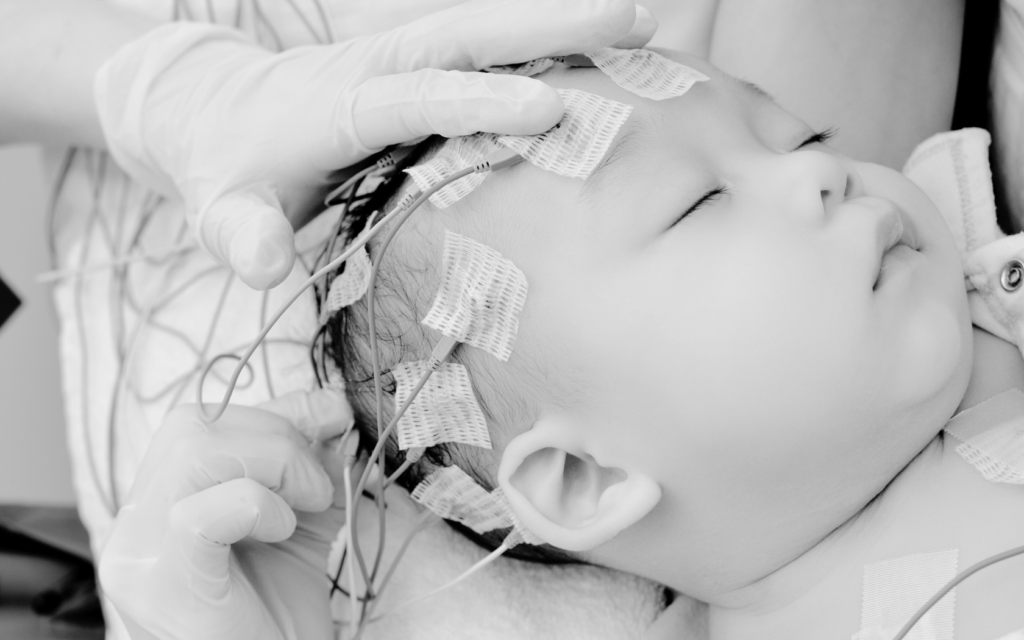You recall the moment clearly: your doctor sat you down and said your child’s diagnosis is HIE. What is HIE? Thanks to shock and exhaustion, you may not recall all of the details of your doctor’s explanation. Of course, this article can’t replace your doctor’s explanation of an HIE birth brain injury. It’s not meant as medical advice.
But our goal is to refresh your mind on what is HIE, and what its causes, symptoms, and treatment are.

What is HIE?
Hypoxic Ischemic Encephalopathy is sometimes called HIE for short. It’s a type of brain injury that happens when a baby’s brain lacks oxygen during or shortly after birth.
As you probably know, even a short time without oxygen can cause major brain damage. This is why HIE has the potential to cause major long-term health challenges for babies.
What Causes an HIE Birth Brain Injury?
HIE birth brain injury can happen for various reasons, including:
- Difficult Labor or Delivery. Sometimes, a baby may experience a challenging birth, leading to HIE. This can occur due to complications during labor or delivery, such as prolonged labor or issues with the umbilical cord.
- Placental Problems. The placenta plays a crucial role in supplying oxygen and nutrients to the baby. If the placenta doesn’t work the way it should, it can result in oxygen deprivation.
- Maternal Health Conditions. Certain maternal health conditions, such as high blood pressure, diabetes, or infections during pregnancy, can increase the risk of HIE in newborns.
- Low Amniotic Fluid Levels. Inadequate levels of amniotic fluid can affect the baby’s environment in the womb, which may lead to HIE.
- Umbilical Cord Issues. Problems with the umbilical cord, such as it getting wrapped around the baby’s neck, can disrupt oxygen supply and cause HIE.
- Infections. Infections in the mother or baby can sometimes lead to HIE birth brain injury if they go untreated.

Symptoms of HIE Birth Brain Injury
Recognizing the symptoms of hypoxic-ischemic encephalopathy is crucial for early diagnosis and intervention. Babies with HIE may exhibit various signs and symptoms, such as the following:
- Breathing problems (Such as shallow or irregular breathing patterns.)
- Low muscle tone (Hypotonia – they appear “floppy” and can’t move their limbs well.)
- Stiff muscles (Hypertonia – they appear too stiff, and can’t move their limbs well.)
- Seizures (These usually manifest as rhythmic movements or staring spells.)
- Difficulty feeding (Weak mouth coordination and sucking reflexes.)
- Abnormal reflexes (Such as not responding to stimuli.)
- Lethargy (Babies with HIE may seem very sleepy.)
- Low Apgar scores (Persistently low scores may be evidence of HIE.)
- Coma (In severe cases)
- Organ dysfunction: (Issues with the heart, lungs, liver, or kidneys for example.)
Diagnosis and Treatment of HIE
Healthcare providers use various diagnostic tools and assessments to confirm HIE. These may include blood tests, an electroencephalogram (EEG) to measure brain activity, and brain imaging scans.
Once a child receives a diagnosis of HIE, it’s time to draw up a treatment plan. Right now, there’s no cure for HIE. So the treatment goal will be to mitigate brain damage as much as possible and support the baby’s recovery.
Here are some common treatment approaches:
Hypothermia Therapy
Also called cooling therapy, this treatment involves lowering the baby’s body temperature to reduce brain inflammation. It also helps limit further damage. Doctors must initiate it within six hours of birth in order for it to be effective.
Medications
Medications can help manage seizures and reduce other complications that can stem from an HIE birth brain injury.
Monitoring
Hospital staff should keep a close watch on the baby’s vital signs, such as heart rate and oxygen levels.
Nutritional Support
Some babies with HIE need specialized feeding techniques or nutrition support to meet their dietary needs.
Therapy
As the baby recovers, physical therapy can help improve muscle tone and motor skills. Speech therapy can assist with feeding and speaking difficulties. Occupational therapy can support overall development.
Can Doctors Be at Fault for Hypoxic Ischemic Encephalopathy?
When your child receives a diagnosis as worrisome as HIE, it’s natural to want to place the blame somewhere. Could your doctor be at fault?
It’s possible. HIE is sometimes preventable. For example, one of our previous medical malpractice cases involved a woman who was given an improper dose of Pitocin. The resulting complications lead to hypoxic ischemic encephalopathy in the baby. The woman received 4 million in damages.
Another case involved negligent resuscitation of a newborn resulting in HIE. In others, failing to monitor fetal heart rate was the culprit.
These mistakes have turned over millions to families who desperately needed funds to provide the best possible care for their injured children.

Find Out What Your Legal Options Are
One of the questions parents ask after, “What is HIE?” is “How will I pay for treatment?” Babies with HIE, especially those with severe cases, will need ongoing medical care. They may require lifelong therapy and medication.
The resources available for children with conditions like hypoxic-ischemic encephalopathy vary by state. But no matter what state you live in, you have the right to seek compensation if a doctor’s negligence caused your child’s HIE birth brain injury.
Ready to see what your options are? We invite you to get in touch with our expert lawyers to find out if you have a case.




